Jaeger-LeCoultre Polaris Date “Blue Double Gradient”
Adding a 1970s touch with a funky, double gradient blue colour.
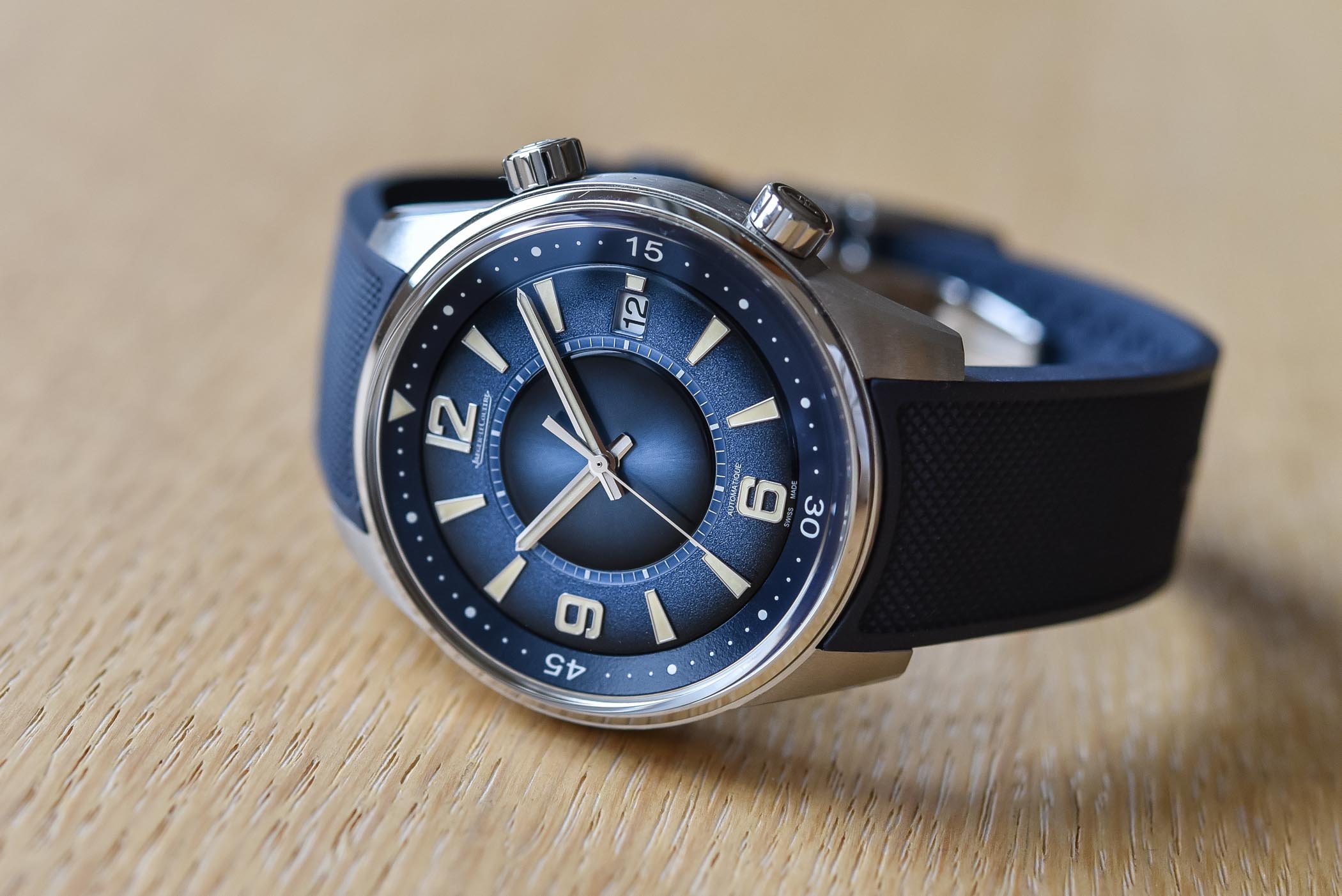
If you didn’t know yet (well, now you’ll know), I have a soft spot for vintage-looking dive watches… I know, I’m weak – and I never dive – but when they are done right, I can’t help myself. I already had a thing for the Polaris Date, when JLC presented it at the SIHH 2018. More recently, the Grande Maison launched a limited edition with a rather funky, 1970s-inspired blue dial (and guess what, I liked it). And as I’ve now had a chance to see it in the metal, let’s give this Jaeger-LeCoultre Polaris Date “Blue Double Gradient” a closer look.
Polaris…
If you’re into watches, the name Polaris should seem familiar. It is one of those names that vintage enthusiasts cherish. This watch wasn’t JLC’s first attempt of a dive watch; in 1959 the brand already had the Memovox Deep Sea, one of its most iconic instrument watches. The Memovox featured a combination of diving capacities and an alarm function – which might strike you as a surprising feature for a dive watch. Not really. First of all, JLC mastered this complication for several years. Then, remember that back in the 1950s, watches had a real purpose. The alarm was used as an additional indication to the count-up bezel – for diving times or decompression stages.
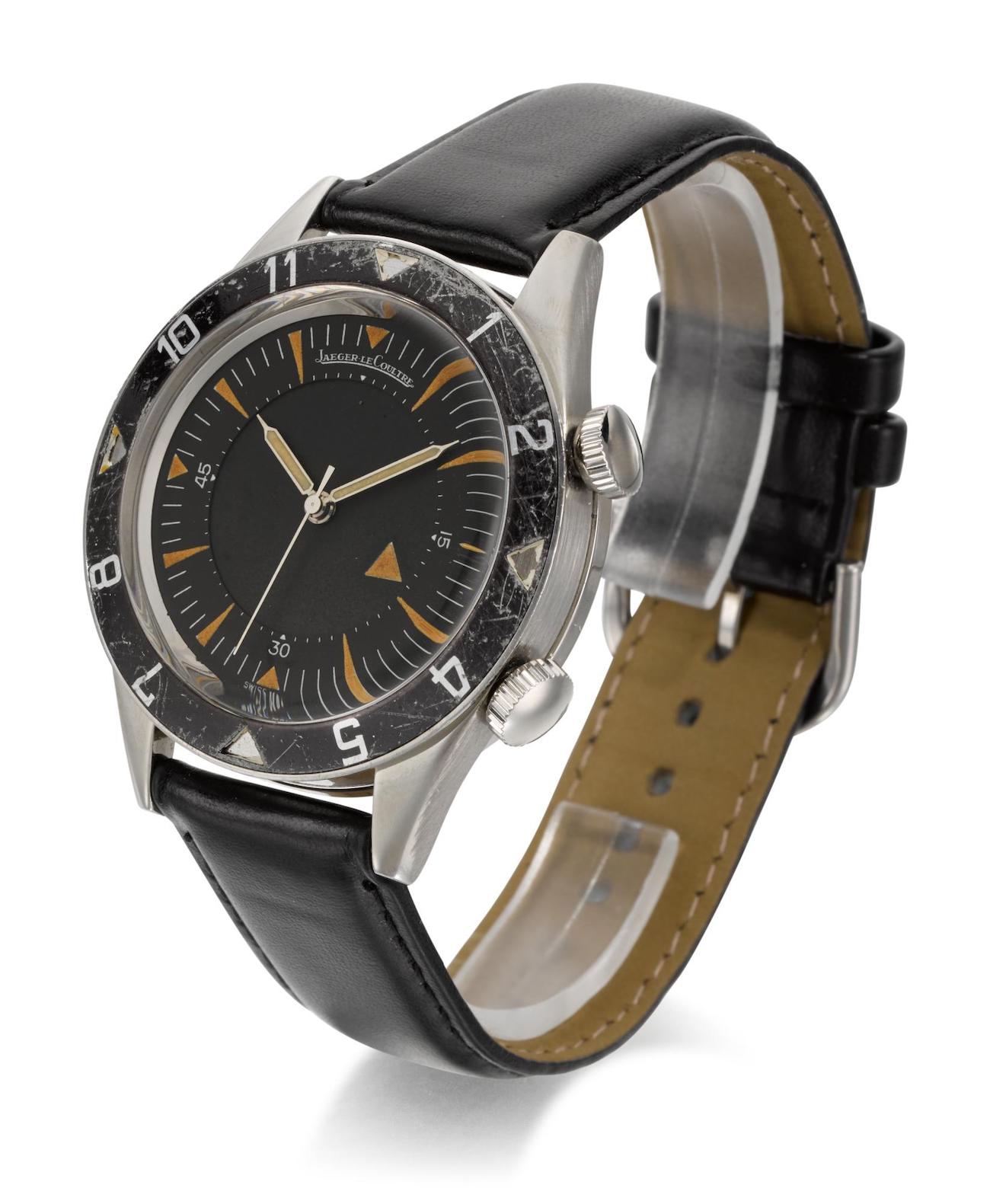
In 1968, Jeager-LeCoultre upgraded the diving/alarm watch and introduce thed Polaris Memovox – which could well be the brand’s most iconic, most sought-after sports watch. This watch combined a compressor-style case – internal rotating bezel – with the alarm function, meaning three crowns on the right side of the case… Visually bold for sure, but that gave this Polaris its true identity. Once again, there was no need to look at the watch to keep track of elapsed times. There was an alarm there for that purpose… In fact, quite practical indeed.
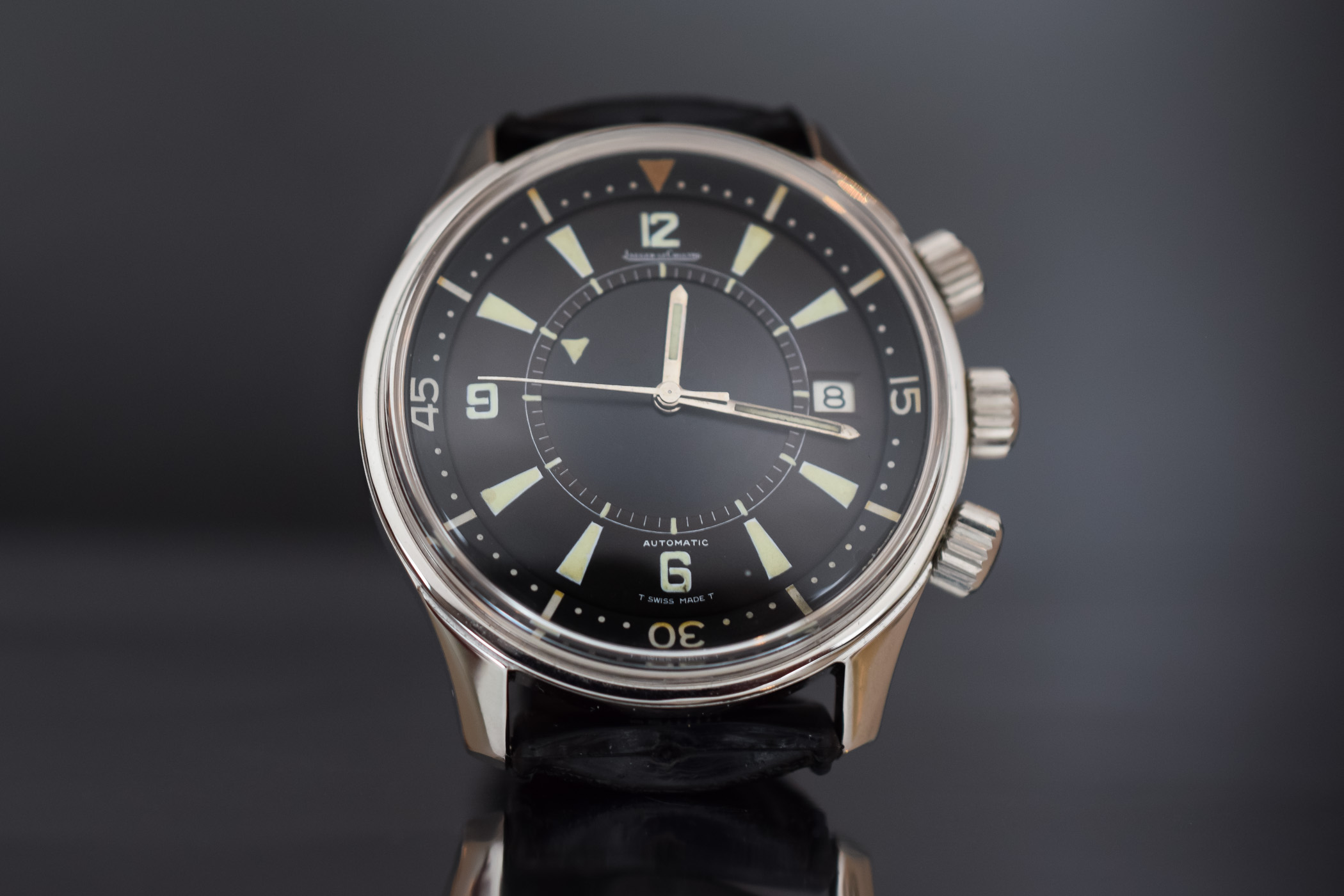
Still, the first-generation Polaris Memovox had a short life and was discontinued in 1969, with around 2,000 pieces manufactured.It was later replaced by the Polaris Memovox II, a watch truly dans l’air du temps, with an undeniable 1970s flair: an ovoid case with integrated lugs, an external bright blue bezel and double gradient dial (you can see where this is going) but still an alarm function.

In 2008, to mark the 40th anniversary of the 1st-gen Polaris Memovox, Jeager-LeCoultre launched a faithful re-edition, with 768 pieces in steel and 165 pieces in platinum. Once again, not something for the long run or for the masses.
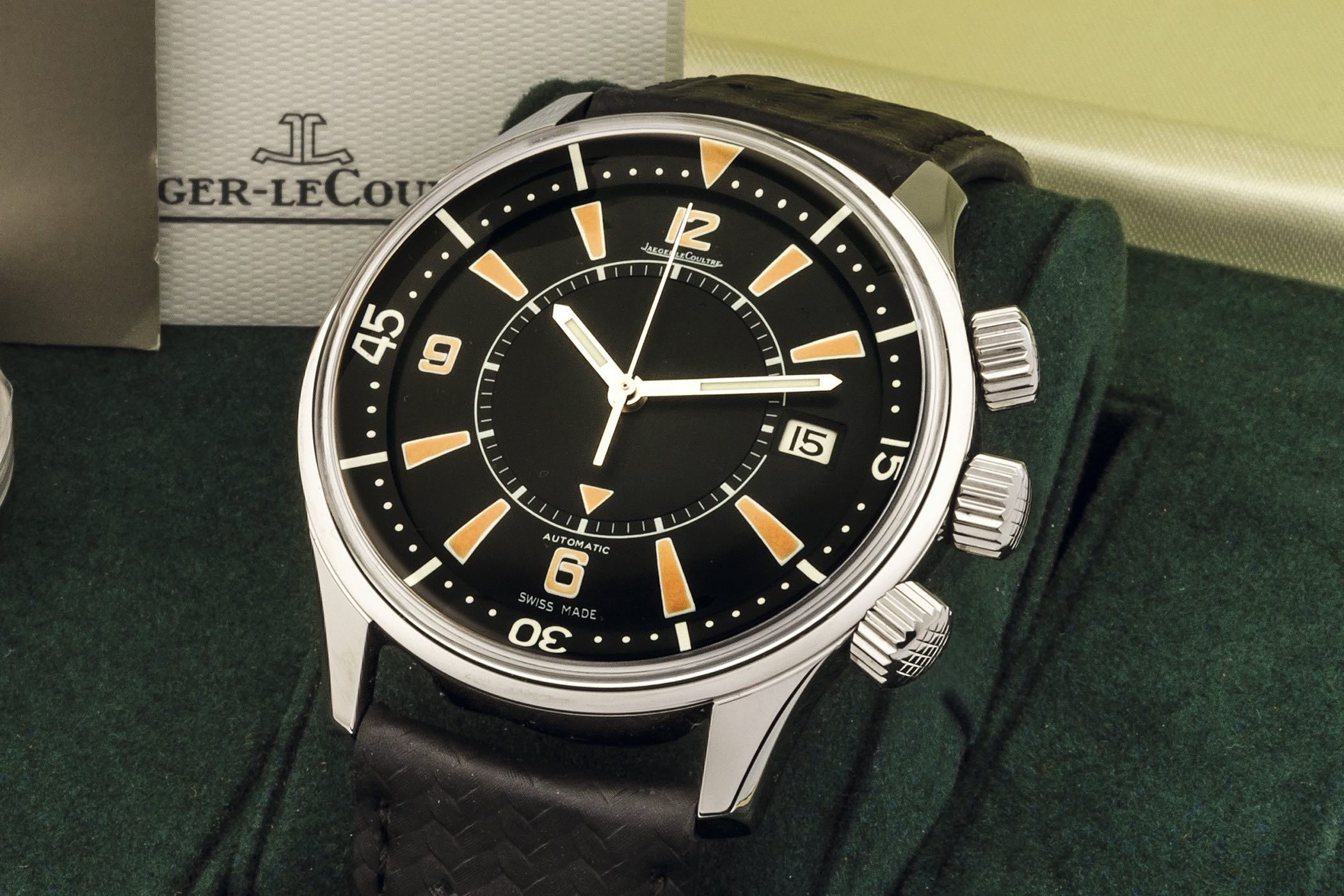
Ten years later, in 2018, and to mark the 50th anniversary of this watch, the brand decided to give it another look… But this time, no longer a 1-to-1 re-edition, no longer a limited edition but a modernized version with a full, sporty-elegant collection of watches with several complications available – time-only, diver, chronograph, chrono-WT, worldtime, and of course, a Memovox. As JLC dropped all its sports-oriented collections, this new Polaris line-up became rather crucial for a brand only focussed on dress watches or high-complications.

Among the circa 15 watches that are in this new Polaris collection, the Memovox was certainly the hero but another one caught my attention, the Polaris date, a vintage-inspired model, visually identical to the Memovox, without the alarm function, but with a slimmer case and a slightly more attainable price. This watch, which was reviewed here, was later launched in a limited edition named “Blue Double Gradient”, which will be today’s topic.
The Jaeger-LeCoultre Polaris Date “Blue Double Gradient”
The origins of this new Double Gradient watch is, as we said already, the Polaris Date. This watch has, together with the Memovox, a rather special place in the new collection, as it is visually more “vintagey” than the rest of the more contemporary pieces and, it is the sportiest of the lot, with a 200m water-resistance – maybe not a true diving instrument, but not far off.
In addition to the black dial model, Jaeger-LeCoultre has added a 1970s version, somehow paying tribute to the Polaris Memovox II and its colourful (to say the least) dial. Thankfully, JLC just retained the cool side of this watch – the colours – and relegated the rest to history. Sometimes, vintage can be rather difficult…
The Double Gradient Dial
One of the specificities of the current Polaris collection is the intense work undertaken by the brand on the dials. Already pleasant on the black version, the three different textures are now even reinforced on this blue model, which plays on reflections and surfaces to create depth and a slightly more playful terrain of expression.
Colourful, textured, playful and full of 1970s charm, the dial of this version is the real deal here.
The dial of the Polaris has three textures, corresponding to the three areas of the dial. The centre has a glossy, sunray brushed lacquer finish reflecting lots of the ambient light. This area also shows the first gradient pattern, darker on its edges. Moving forward, we have the hours chapter ring, which features the applied trapezoidal markers, this time with a matte finish and a grained surface. Here again, a gradient blue colour is applied by hand, with lacquer. Finally, the internal rotating bezel is opaline finished, with a lightly grained surface – but a uniform dark blue colour.
Time is conventionally indicated by central hands – hours, minutes, seconds. All the important elements are filled with light cream Super-LumiNova, ensuring very decent legibility in the dark, and a cool, slightly vintage touch the rest of the time. Furthermore, it works pretty well with the blue dial.
Now, there’s a date… Something that has already provoked debates, and will create some more. Personal take – I don’t mind it since the original 1968 and 1970s models already featured one. Yet, there’s something more questionable; the minute track in the middle of the dial. While it made full sense on the Memovox version and was used to set the alarm, I don’t see its utility in this non-alarm model. Visually, I don’t mind it but in terms of purpose, I’m slightly doubtful.
Apart from these two points, the dial is full of details, it is beautifully executed and its new blue colour really adds to the watch. It certainly isn’t to everyone’s taste, but since this model is a limited edition, I think it’s wise that JLC decided to have been a bit bolder.
A beautifully finished case
When it comes to sub-10k watches, most cases are finished with minimal human intervention. Mostly, the hand finishes concern the last bits of polishing. This isn’t problematic per se, but since a watch is an emotionally driven object – at least, in today’s market, since it has no real purpose other than pleasure – some handmade parts add to the beauty of this object.
For the Jaeger-LeCoultre Polaris Date, just like the rest of the collection, the brand has done something rare, and all the surfaces of the case have been finished by hand, whether for the polished or the brushed surfaces. And when handling one of these modern Polaris, you can feel it. It’s neat, it’s sharp, the brushing is deliberately deep and far more present than your usual tool watch.
The case of the Polaris Date measures 42mm in diameter, meaning that it’s on the large side for a JLC, with a 13mm thickness. Clearly, it has some presence and feels more modern and sportier than the cream indexes would let you think. Yet, the rubber strap is supple and the lugs well curved, allowing for a watch that is both well proportioned and balanced on the wrist. The case is water-resistant to 200m, has a plain steel back with a diving motif and the signature double-crown for the bezel and the movement.
Movement
Inside the Jaeger-LeCoultre Polaris Date “Blue Double Gradient” is the in-house Calibre 899A/1, a self-winding movement with a 4Hz frequency and 38h power reserve – a classic time-and-date movement for the brand. Nicely decorated, even though hidden, it has undergone the 1000-hour test control. In all fairness, a longer power reserve would be welcome, even though the watch is automatic.
Thoughts on the Polaris Date “Blue Double Gradient”
Well, you’ve probably got the message that besides some complaints, I still like this watch – a lot. The dial, its colour, the beauty of the case, the integration of multiple old-school elements without falling into the trap of the re-edition, makes this Polaris Date a very pleasant piece. Would I go for this “Blue Double Gradient” edition or the classic black dial…? That’s the big question.
Price and availability
Launched first as a US-exclusive edition, the Jaeger-LeCoultre Polaris Date “Blue Double Gradient” is now available worldwide, in boutiques and online at JLC’s website. It is limited to 800 pieces and is priced at USD 8,250 (excl. taxes), EUR 8,300 (incl. taxes), CHF 8,200 (incl. taxes) or GBP 7,150 (incl. taxes). More details at www.jaeger-lecoultre.com.

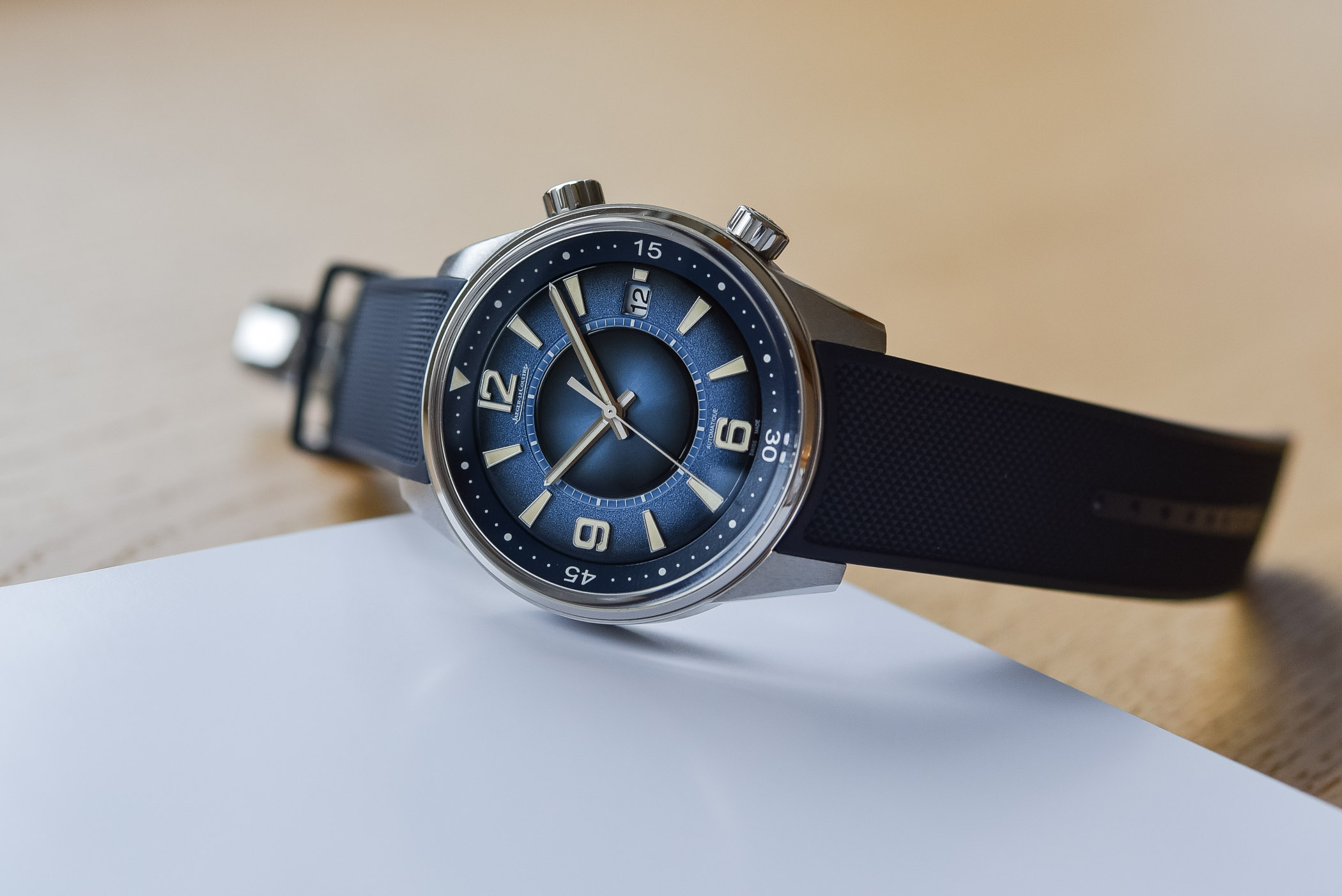
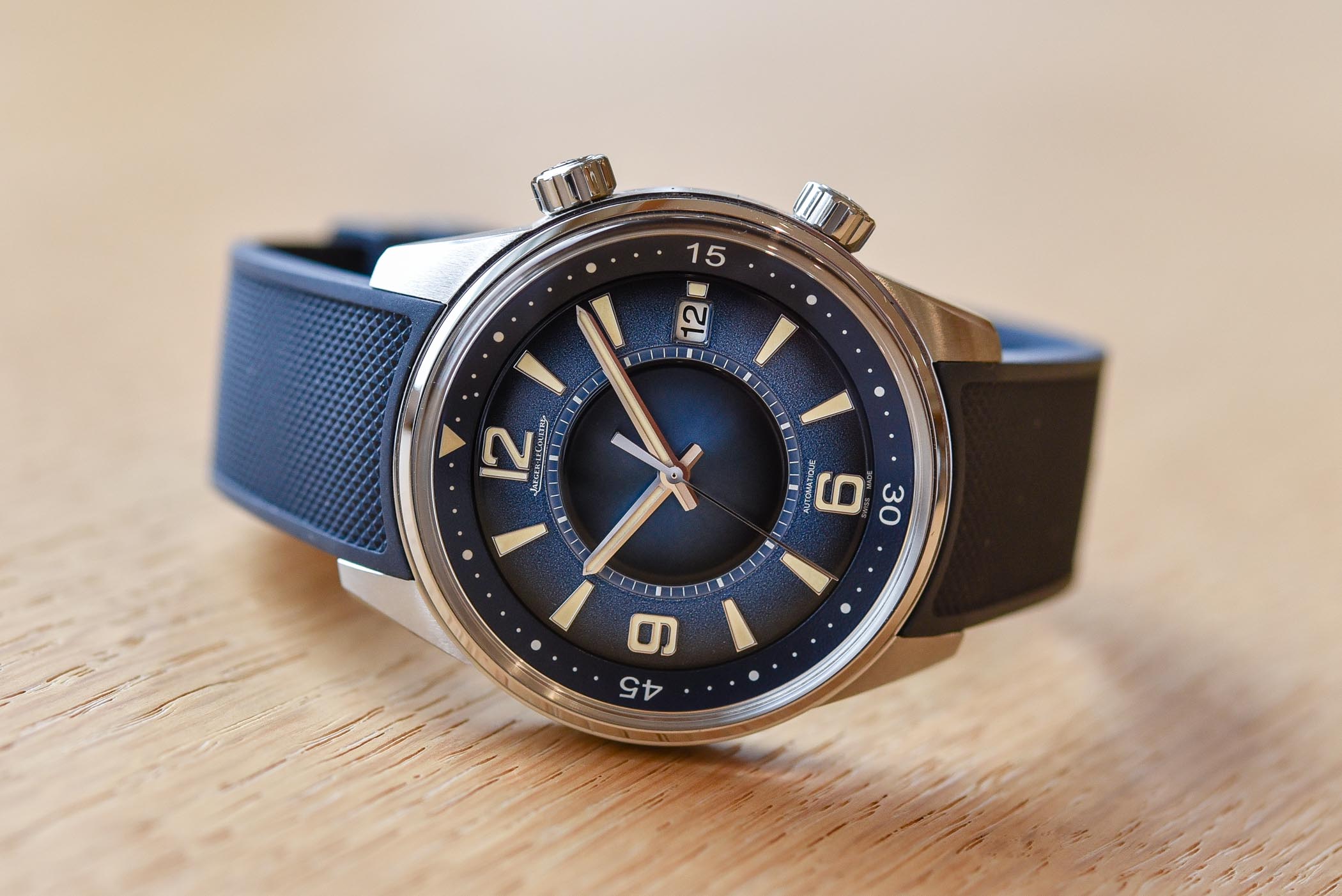
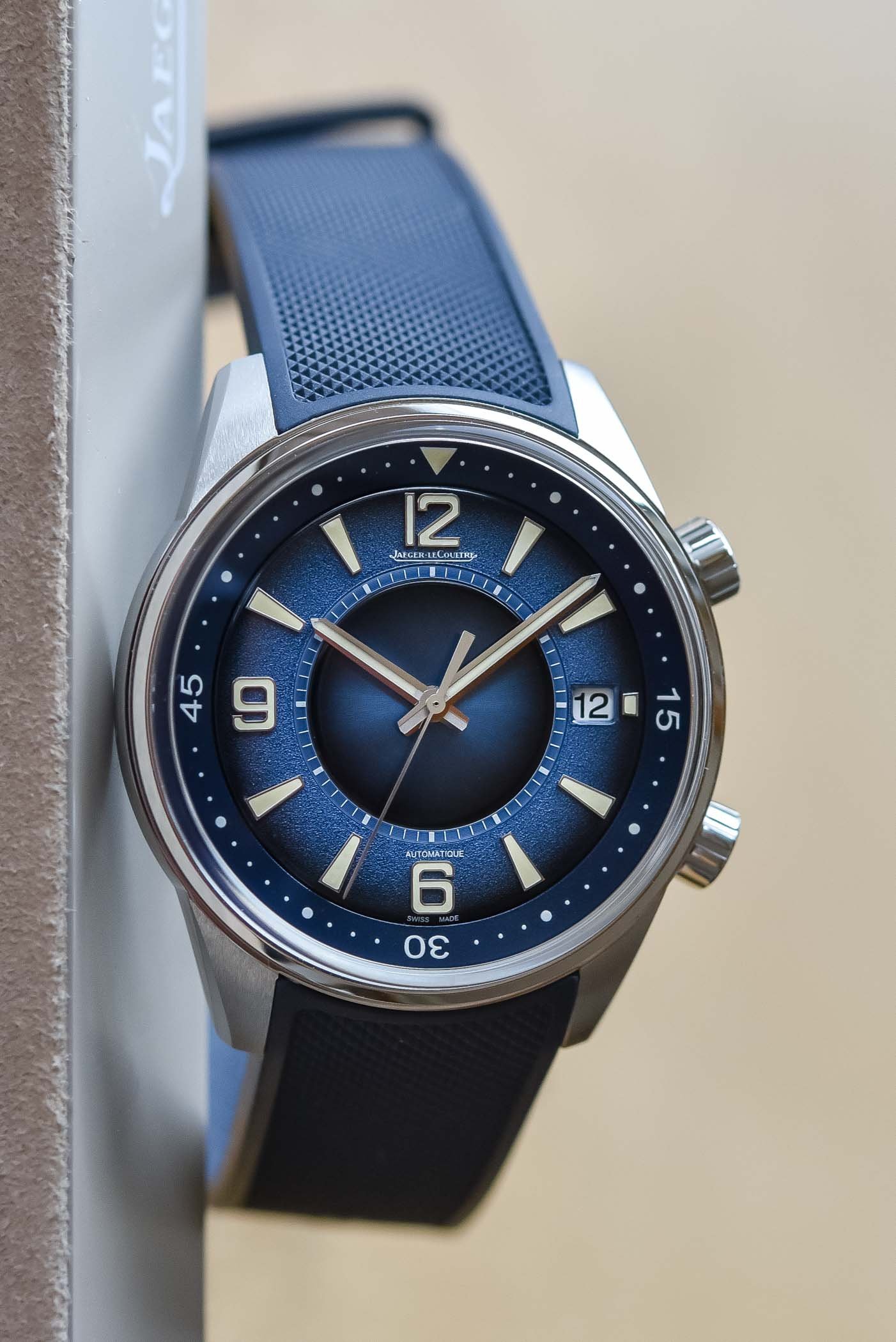

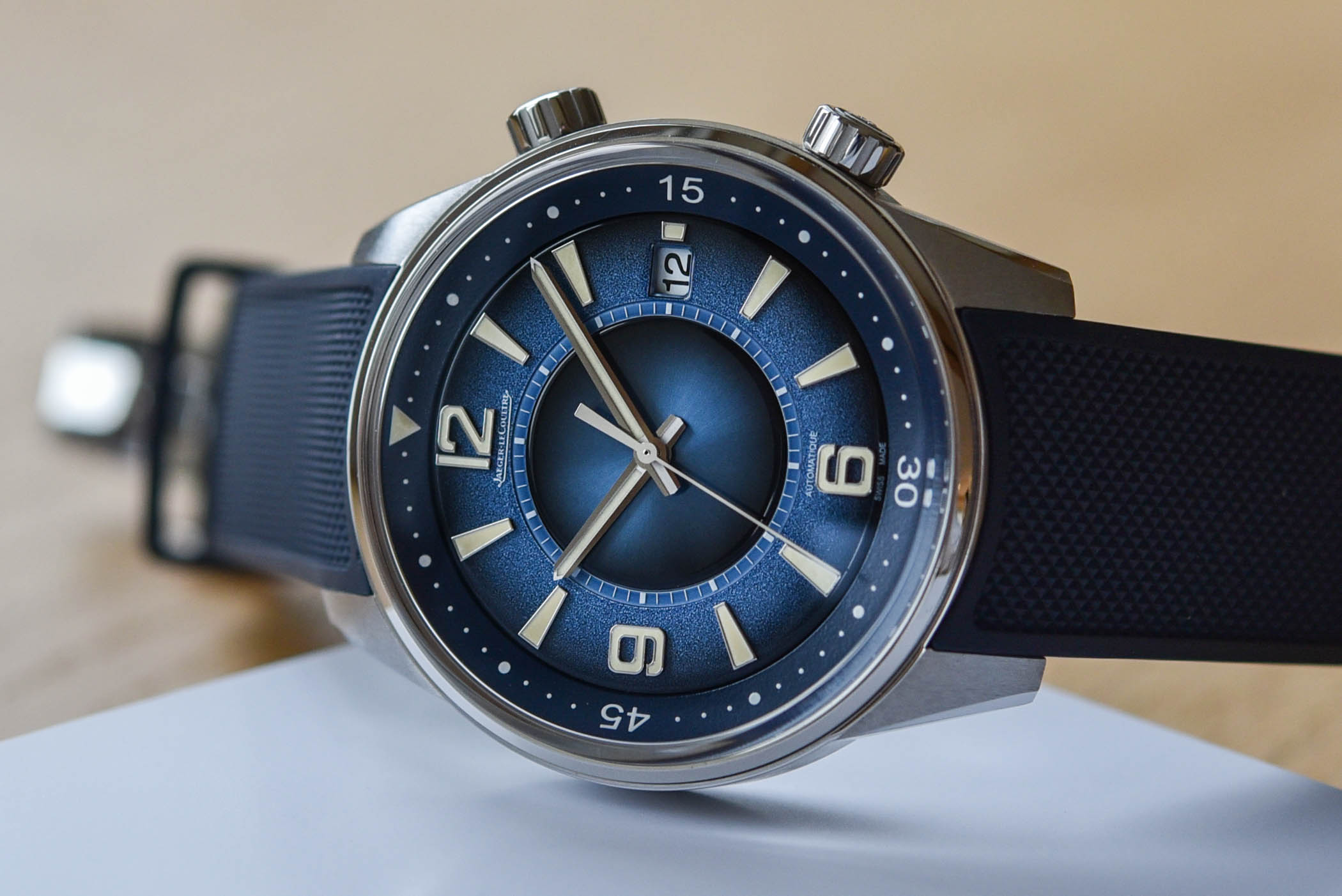

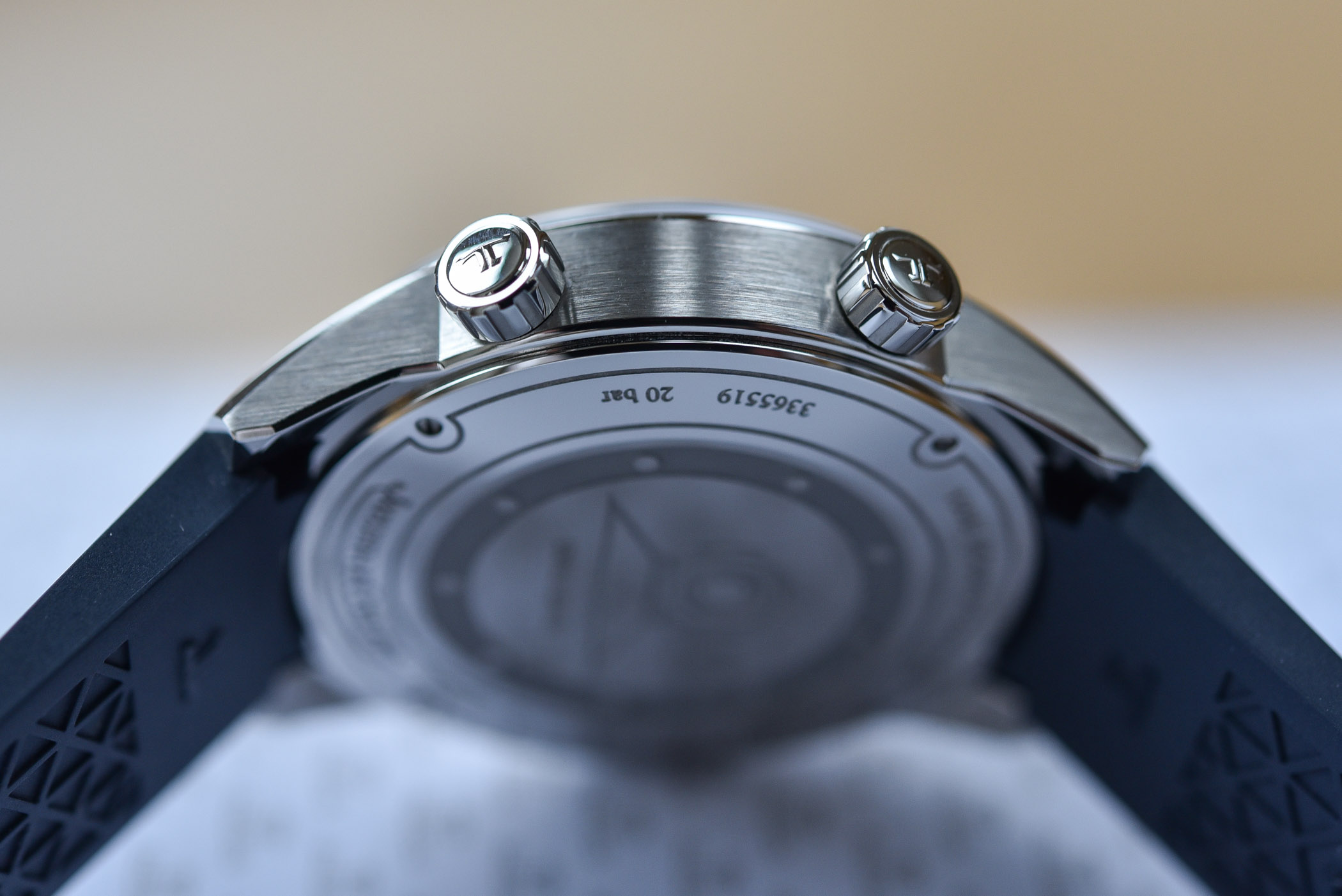
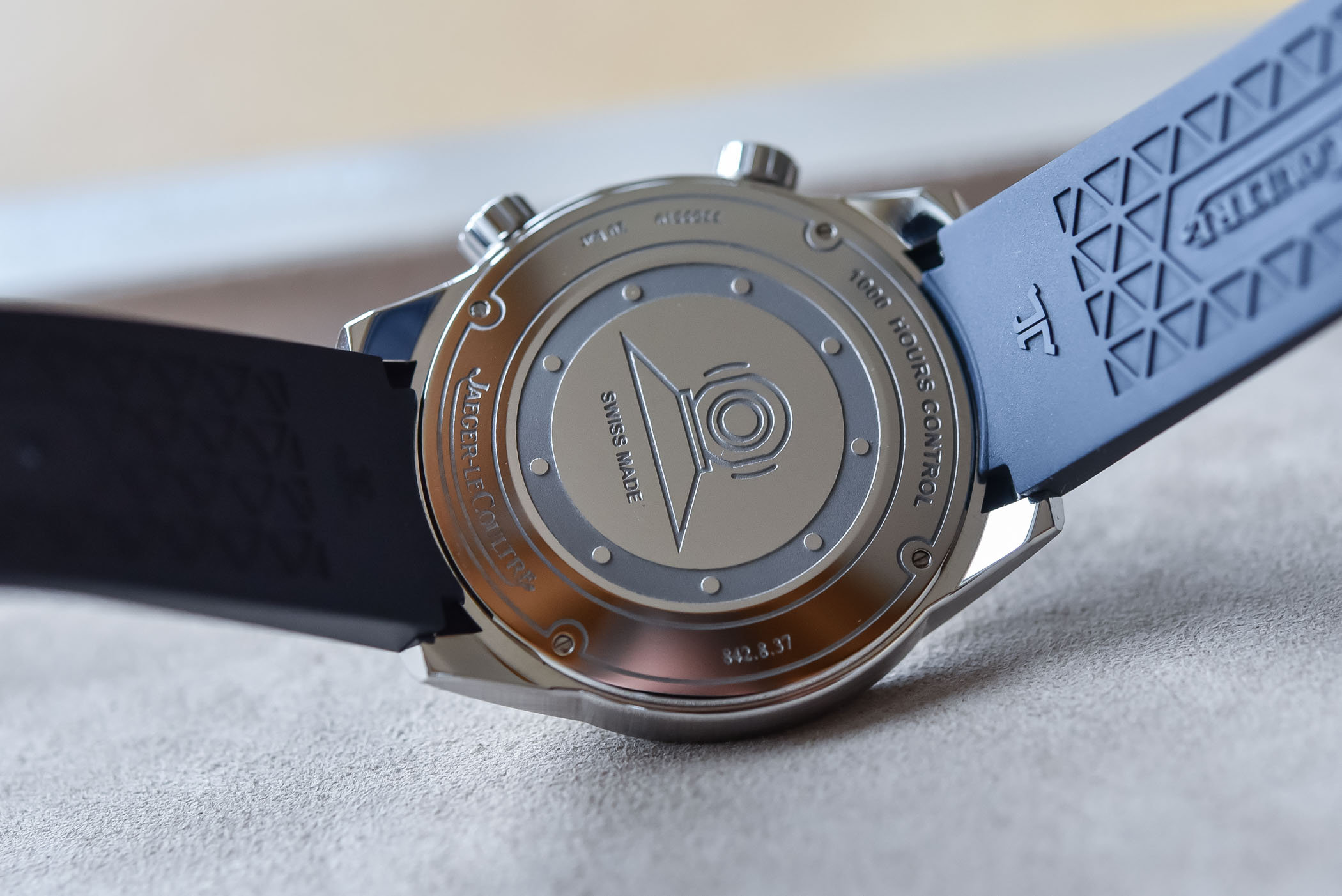




6 responses
Great review and pics! The center minute markers are very handy when setting up the time after the watch has been sitting in your box for a few days. The inner bezel rotates without any clicks and it can be a bit challenging to perfectly align it with the hour markers, so that the center marks are a good reference point.
That, and it looks great ?
@Julian – fair points!
That 1959 Memovox Deap Sea is lovely.
This still leaves me cold. I hope they do something with it. The case in particular looks very basic.
On a totally unrelated note, I saw a four door Aston Martin the other day; achingly beautiful.
Blue dial is beautiful…but is it just me…I can’t seem to be able to like a blue strap…
Wow, JLC’s tool watch dresses up nicely!